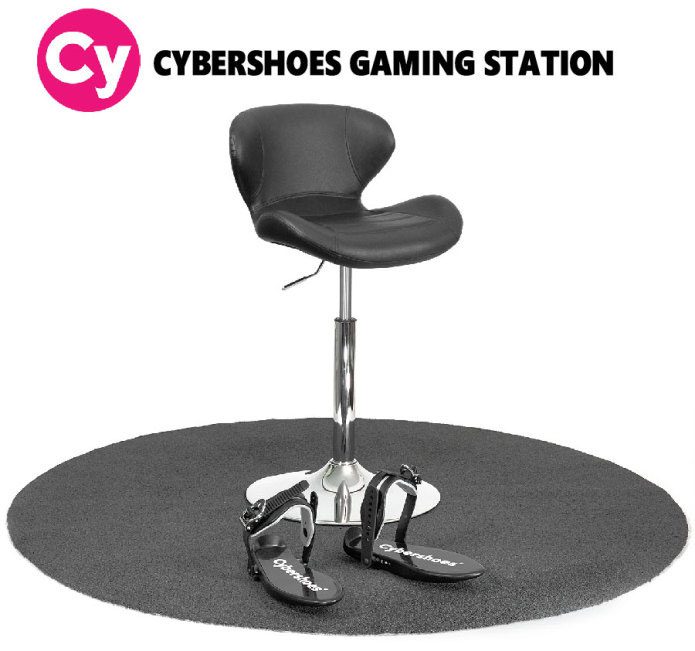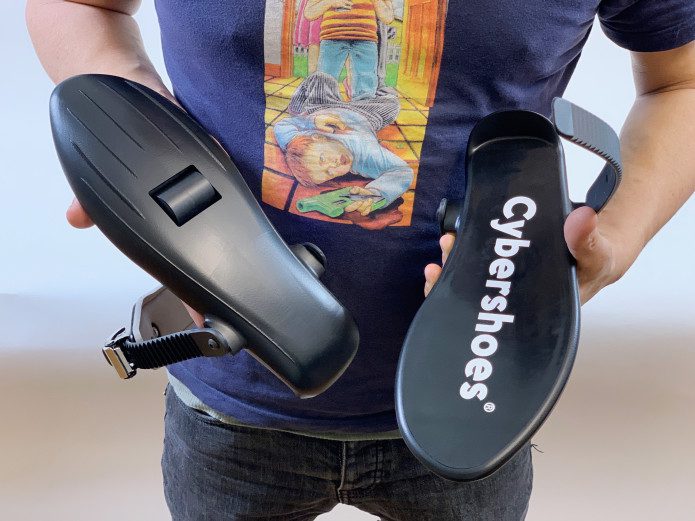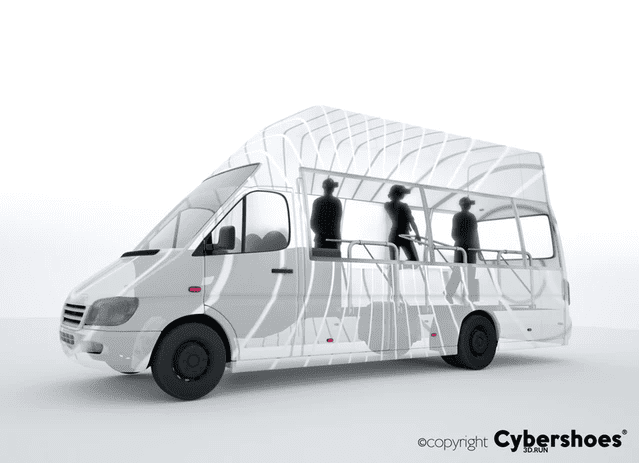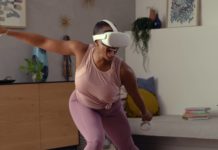VR makes a promise that critics argue it sometimes falls short of: your body as the controller. There are plenty of full body experiences in VR, so this claim is already pretty far out there, but we all want to step and move in our games. With Cybershoes, that dream is reality.
The strap-on accessory fits any sized shoe. The user walks or runs across a special carpet that prevents static build up and allows for smooth movement. Unlike a treadmill, there are no moving parts to worry about. You simply sit and use your feet, swiveling to turn and spin. Cybershoes makes you feel like you’re exploring ancient dwarven ruins or fleeing from a horde of the undead in a way arm swinging just can’t match.
 The basic components involve the shoes themselves, which require a battery but are otherwise wireless input devices. The batteries are supposedly very easy to replace, but the developer of the shoes says they will last a long time. If they are like the wands for the Vive, they won’t need a ton of charging between sessions.
The basic components involve the shoes themselves, which require a battery but are otherwise wireless input devices. The batteries are supposedly very easy to replace, but the developer of the shoes says they will last a long time. If they are like the wands for the Vive, they won’t need a ton of charging between sessions.
Cybershoes will support all Steam games that offer free locomotion, which includes some of our favorite recent titles like:
- Skyrim
- Serious Sam
- The Wizards
- Blade and Sorcery
[youtube https://www.youtube.com/watch?v=TOCbgiJ1N8Y&w=560&h=315]
Indie GoGo Funding Achieved
Thanks to the first 135 backers, the Cybershoes campaign achieved its goal of funding for $35,000 in just 48 hours. That’s a pretty rapid turnaround, indicating there is significant demand for the product and probably giving the developers a chance to manufacturer the devices.
The campaign indicates backers will receive their devices sometime around July of 2019, which is right around the corner. That’s about right for manufacturing times and international shipping, especially with a design that looks near final but is probably still seeing refinement.
There are still packages available as of writing for those who want in on the ground floor. They are currently selling for 50% off of the $549 price tag they will be going for. If you want a unique solution to locomotion in VR, and you don’t want to spend an arm AND a leg, this one might be for you.
The History on CyberShoes
Along with news of its funding comes a bit of history about the product itself. The proof of concept was much more like a harness system that was worn around the waist. It required a floor slick enough to allow the user to traverse it without actually moving, with the harness to maintain balance. This idea grew into a treadmill, or a walker, which you can see below.
[youtube https://www.youtube.com/watch?v=DCPcl1Dw0d0&w=560&h=315]
Early prototypes were ambitious. At one point, the team wanted to raise awareness by driving buses full of users around as they used the treadmills to interact with a virtual world. Like on board entertainment.
In 2016, the stage and platform design was ditched and the emphasis was placed on shoes the user could wear. These designs evolved, from rollers on the shoes to an external device the user wears. Today’s design isn’t that far off from concepts two years ago, but the refinements were happening on the hardware side. When we first reported on the device at CES 2019, the number of applications it supported were limited. As we get closer to launch, it’s exciting to see the team has made this work for any application that has free locomotion.
Final Thoughts
CyberShoes represents some original thinking in VR with a practical implementation. The swivel chair design looks like a fun way to encourage players to move in VR. As they say, it’s all about involving the lower half of the body in the gameplay.
I love free locomotion as a concept. Arm swinger locomotion is also great, and certainly helps with cardio. You’d be hard pressed to find a Sprint Vector player who isn’t getting themselves in shape by playing the game.
We’ve also looked at a lot of movement solutions in VR that offer unique designs, like the PSVR 3DRudder or the Alto 100. Both offer balance-board style movement, but the price point is high. With slots left for initial orders, users have a good opportunity to invest in a unique form of locomotion at a more modest price point.
I also wonder a bit about the swivel chair design. Packages without the chair need to find something that has a stable base. Players will be turning and spinning rapidly, and the chair will need proper balance and weight to avoid tipping over. The last thing you want is to fall over in VR.
Still, Cybershoes represents a unique and optimistic outlook for movement in VR. Finally, a real solution for involving the legs that promises true cardio.









